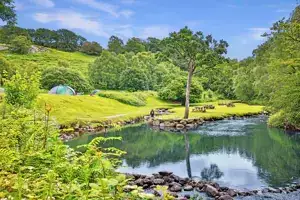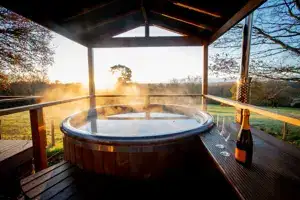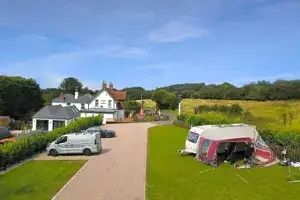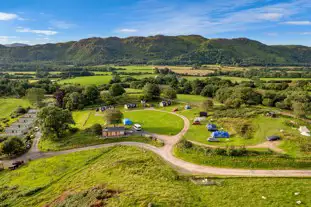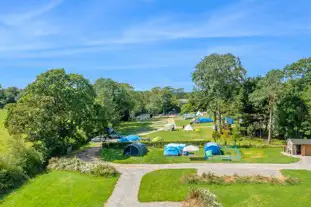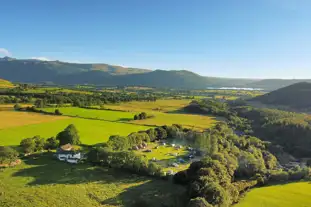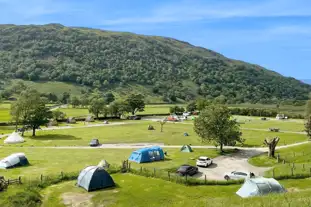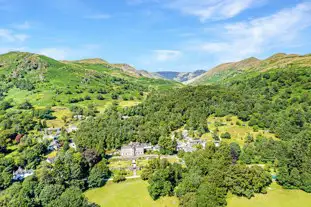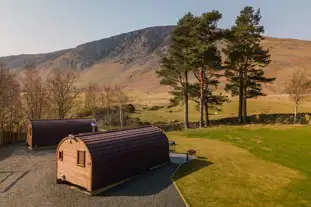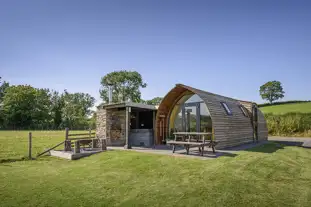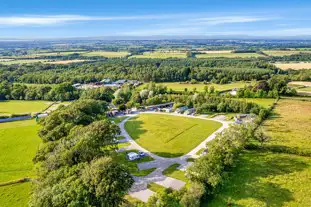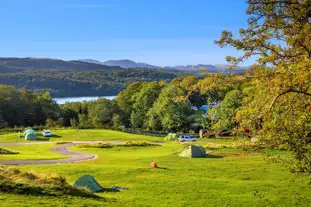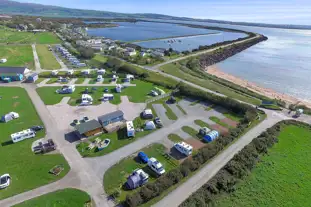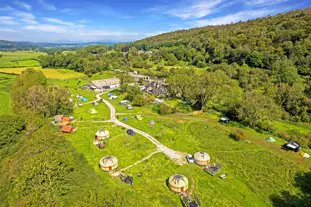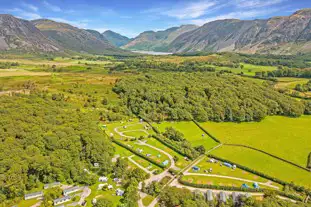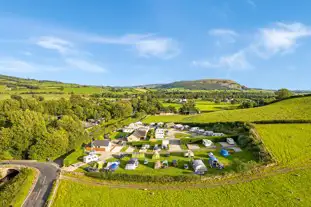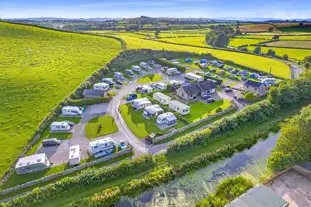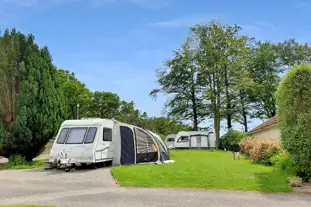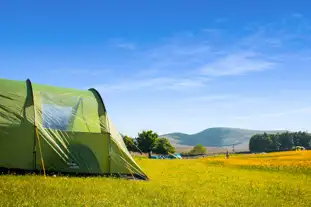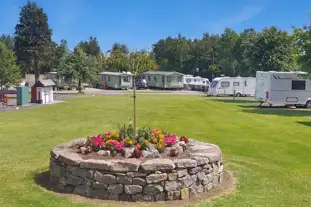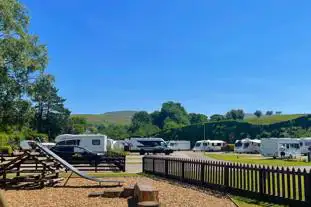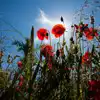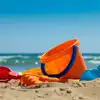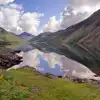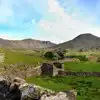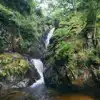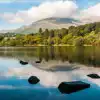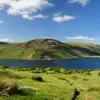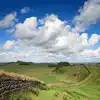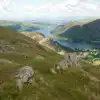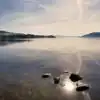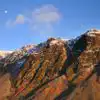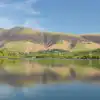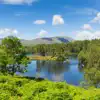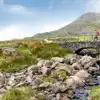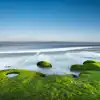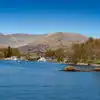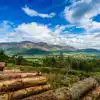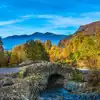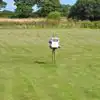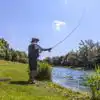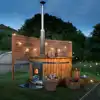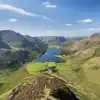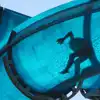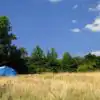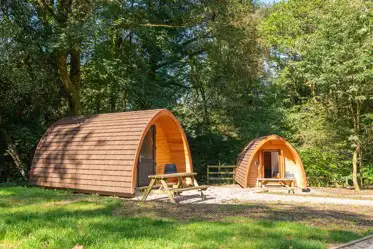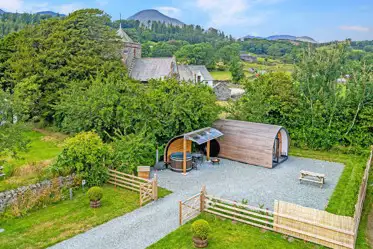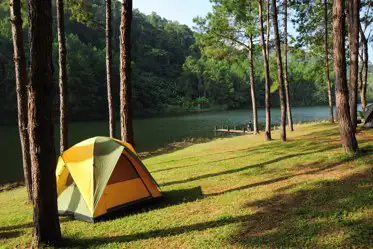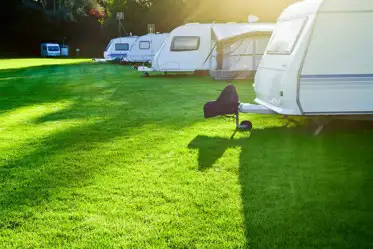
Campsites in Cumbria & Lake District
Campsites in Cumbria and the Lake District are set in the most beautiful corner of England, surrounded by scenic lakes, dramatic valleys, mountain peaks and fells. Famous Lake Windermere is the largest in England and a haven for boat enthusiasts, with Ullswater, Derwentwater, Coniston Water, Scafell Pike and Bassenthwaite for other outdoor adventures. Discover amazing walking routes, wild swimming spots and more!
140 campsites in Cumbria & Lake District
Parkgate Farm Holidays
Irton, Holmrook, Cumbria
96 reviews
99%
would recommend
Small, family camping and glamping site with stunning views in the Lake District. Ten minutes from beaches too.
Pitches: 3 x Non Electric Grass Pitches, 2 x Medium Electric Grass Pitches
Blaithwaite Country House Estate
Wigton, Cumbria
40 reviews
92%
would recommend
Camping, touring and glamping on a 250 acre country estate. Within ten minutes of Wigton and the Lake District.
Pitches: 2 x Electric Wood Bark Pitches with Hot Tubs, 32 x Non Electric Grass Tent Pitches
Kestrel Lodge Campsite
Bassenthwaite, Keswick, Cumbria
91 reviews
99%
would recommend
Peaceful, small and quiet campsite in the Lake District, just below Skiddaw. Only 15 minutes to Keswick.
Pitches: 2 x Electric Hardstanding Campervan/Roof Tent Pitches, 5 x Electric Grass Tent Pitches
Harbour Side Caravan Site
Maryport, Cumbria
94 reviews
95%
would recommend
A small coastal caravan and campsite by Maryport Marina, with scenic views over the Solway Firth.
Pitches: 28 x Electric Hardstanding Touring Pitches, 3 x Camping Pods (Dog Friendly)
Sykeside Camping Park
Patterdale, Penrith, Cumbria
112 reviews
96%
would recommend
Lake District camping park with an onsite pub and shop. Within 20 minutes of Lake Windermere and Ullswater!
90 x Non Electric Grass Tent Pitches
Add your dates to check availability
See only sites and pitches that are available for your stay
Rydal Hall Campsite
Ambleside, Cumbria
82 reviews
96%
would recommend
Relaxed family and dog friendly site nestled in the Lake District, five minutes to Windermere. Onsite tea shop too!
32 x Non Electric Grass Tent Pitches
7m x 7m
Carrock Glamping Pods
Hesket Newmarket, Wigton, Cumbria
42 reviews
100%
would recommend
Luxury adult only ensuite pods with hot tubs. Set at the foot of Carrock Fell in the Lake District National Park.
Pitches: Carrock View Ensuite Glamping Pod With Hot Tub, Carrock Sunset Ensuite Glamping Pod With Hot Tub
Sandwath Farm
Kirkby Stephen, Cumbria
25 reviews
100%
would recommend
Rural dog friendly glamping pods with a private fire pit and optional hot tub. Farm shop and café onsite.
Pitches: Greenriggs Deluxe Ensuite Glamping Pod with Optional Hot Tub (Dog Friendly), Moorlands Deluxe Ensuite Glamping Pod with Optional Hot Tub (Dog Friendly)
Wallace Lane Farm
Caldbeck, Wigton, Cumbria
199 reviews
98%
would recommend
Camping, touring and glamping on the northern fringe of the Lake District. Some pitches even have private hot tubs!
Pitches: Ensuite Fully Serviced Pitches With Hot Tub and Kitchen, 12 x Fully Serviced Hardstanding Touring Pitches
Park Cliffe Camping and Caravan Estate
Windermere, Cumbria
27 reviews
100%
would recommend
Lake District camping, touring and glamping site with views of Lake Windermere. Onsite bar, shop and games room!
Pitches: 23 x Fully Serviced Hardstanding Touring Pitches, 40 x Non Electric Fellside Grass Pitches
Harbour Lights
Haverigg, Millom, Cumbria
196 reviews
91%
would recommend
Family friendly site at the edge of the Lake District with direct beach access and an onsite ice cream parlour!
Pitches: 7 x Electric Gravel Pitches, 10 x Electric Hardstanding Touring Pitches
Moss Howe Farm Campsite
Witherslack, Grange-Over-Sands, Cumbria
143 reviews
92%
would recommend
Peaceful Lake District camping and glamping site, 15 minutes to Lake Windermere. Onsite shop and fire pits welcome!
Pitches: Mini Lodge Pod with Hot Tub (Dog Friendly), 5 x Large Electric Grass Pitches
Church Stile Farm and Holiday Park
Seascale, Cumbria
197 reviews
95%
would recommend
Camping, touring and glamping, within a five minute walk of pubs. 15 minutes to Seascale Beach and Scafell Pike!
Pitches: 60 x Non Electric Grass Tent Pitches, 30 x Electric Grass Pitches
Little Acre Camping
Crooklands, Milnthorpe, Cumbria
237 reviews
100%
would recommend
Adult only (16+) site, two minutes from the M6, great for the Lakes or Dales. Just a five minute walk from a pub.
Pitches: 15 x Electric Hardstanding Pitches, 7 x Electric Grass Tent Pitches
Little Acre Holiday Park
Crooklands, Milnthorpe, Cumbria
777 reviews
99%
would recommend
Adult only (16+) touring park with modern facilities. By the Lancaster Canal, close to the M6, the Lakes and Dales.
Pitches: 35 x Electric Hardstanding Pitches, Electric Hardstanding Small Pitch
The Larches Caravan Park
Mealsgate, Cumbria
93 reviews
98%
would recommend
Adult only and dog friendly site, ten minutes to the Lake District's northern fells with an onsite shop.
Pitches: 15 x Fully Serviced Grass Pitches, 15 x Fully Serviced Hardstanding Pitches
Low Greenside Farm Campsite
Ravenstonedale, Kirkby Stephen, Cumbria
119 reviews
97%
would recommend
Peaceful, friendly site with large pitches, scenic views and campfires. Central to the Lakes and Dales.
Pitches: Non Electric Grass Backpacker Pitch, 20 x Non Electric Large Grass Tent Pitches
Beckses Caravan Park
Penrith, Cumbria
115 reviews
97%
would recommend
Small, family run park offering a quiet base within the Lake District, ten minutes from Ullswater. Dogs welcome!
Pitches: 27 x Electric Hardstanding Pitches, 2 x Camping Pods
Pennine View Park
Kirkby Stephen, Cumbria
54 reviews
96%
would recommend
Family-friendly site on the edge of the Yorkshire Dales. Onsite facilities include a bar, campers kitchen and shop!
Pitches: 14 x Electric Grass Tent Pitches (Six Person), 18 x Electric Grass and Hardstanding Touring Pitches
Birchbank Camping Site
Ulverston, Cumbria
174 reviews
96%
would recommend
A small campsite on a Lake District sheep farm, on the fells between Coniston Water and the Duddon Estuary.
Pitches: 7 x Electric Grass Pitches, 16 x Non Electric Grass Pitches
Popular searches for Cumbria & Lake District campsites
Other popular searches
Accommodation options
Things to do when camping in Cumbria & Lake District
Lakes and waterways
The Lake District is famous for its scenic lakes and winding rivers. Lake Windermere, the largest lake in England, is a highlight, with calm waters that are perfect for boat trips or a gentle paddle. Visitors can even enjoy rides on the famous steamboats, which have been crossing the lake for over a century, offering a relaxing way to see the surrounding scenery.
Other lakes in the region are just as breathtaking. Ullswater, often called one of the most beautiful lakes in England, is longer and narrower than Windermere, making it ideal for lakeside walks or taking a steamer boat trip. Derwentwater, near Keswick, is surrounded by fells and dotted with small islands you can explore. Bassenthwaite Lake is quieter, perfect for wildlife watching. Look out for ospreys, herons, and even deer along the shore. Coniston Water offers dramatic views of the Old Man of Coniston, while Buttermere is smaller with calm waters.
For those seeking dramatic landscapes, Wast Water is England’s deepest lake, set beneath the peaks of Wasdale. Crummock Water is nearby, a quiet lake surrounded by rolling fells, perfect for photography. Thirlmere is a reservoir surrounded by forested slopes, offering peaceful boating opportunities and quiet picnic spots.
The region’s rivers, like the River Eden, weave through dramatic valleys like the Vale of Eden, while canals such as the Lancaster Canal and Ulverston Canal are slower, calmer waterways. Visitors can enjoy traditional lake cruises, hop on ferries to explore different villages, or try paddleboarding and wild swimming in the warmer months.
The 16 official lakes
- Windermere - 14.8 km² - The largest natural lake in England, stretching over 10 miles. Popular for cruises, sailing, and lakeside towns like Bowness and Ambleside
- Ullswater - 8.9 km² - The second largest lake, known for its scenic Ullswater Steamers and Aira Force waterfall
- Derwentwater - 5.5 km² - Close to Keswick, surrounded by wooded fells such as Catbells and Friar’s Crag
- Bassenthwaite Lake - 5.3 km² - The only lake in the Lake District that’s actually called a lake! A protected wildlife area with views of Skiddaw
- Coniston Water - 4.0 km² - Next to the famous Old Man of Coniston, home to a boat centre and historic Steam Yacht Gondola
- Haweswater - 3.9 km² - A reservoir created in the 1930s, which hides a lost village
- Thirlmere - 3.3 km² - Another scenic reservoir with a wooded shoreline
- Ennerdale Water - 3.0 km² - The most westerly lake. One of the most unspoiled and quiet lakes, with no major roads or boats
- Wast Water - 2.9 km² - England’s deepest lake at 79m. A popular location for wild swimming
- Crummock Water - 2.5 km² - Linked to Buttermere and surrounded by woodland and waterfalls such as Scale Force
- Esthwaite Water - 1.0 km² - A peaceful spot for fishing (including pike and trout). Set between Windermere and Coniston
- Buttermere - 0.9 km² - Discover Buttermere Infinity Pool and top walking trails
- Grasmere - 0.6 km² - Famous for its Wordsworth connections and Grasmere Gingerbread
- Loweswater - 0.6 km² - A quiet, less-visited lake that offers an excellent circular walking route
- Rydal Water - 0.3 km² - Small and scenic, near Rydal Mount, the home of William Wordsworth
- Brothers Water - 0.2 km² - Peaceful and shallow, perfect for wildlife spotting
Trails and Climbs
The Lake District is a paradise for walkers and climbers, with trails for every ability. From peaceful valley strolls to challenging mountain hikes and over 200 fells to explore, visitors can discover a range of paths that lead to stunning views, secret waterfalls, and hidden lakes.
At the heart of the national park is Scafell Pike, England’s highest mountain at 978 metres. Climbing to its rocky summit is a real adventure and also part of the famous National Three Peaks Challenge. Nearby Scafell is slightly lower but just as dramatic, and the two peaks are often tackled together by experienced hikers. Another favourite for seasoned climbers is Helvellyn, famous for its narrow ridge, Striding Edge, which gives brave walkers amazing views in every direction. For something gentler, Skiddaw (931m), near Keswick, offers wide, steady paths and sweeping views over Derwentwater and Bassenthwaite.
The Old Man of Coniston is another iconic climb, overlooking Coniston Water and old copper mines. Great Gable, one of the most photographed peaks, stands proudly in the centre of the Lake District and offers a tough but rewarding climb with views of the surrounding valleys. Blencathra, near Threlkeld, is known for its sharp ridges and challenging scrambles, while Haystacks, a favourite of guidebook author Alfred Wainwright, offers a smaller but scenic climb with tarns and rocky viewpoints.
For shorter but just as scenic walks, Loughrigg Fell near Ambleside and the Catbells Walk above Keswick are perfect for families, giving rewarding views but with trails that are less than 10km long.
The Lakes are also full of great circular trails. The Fairfield Horseshoe and Langdale Horseshoe are two classic routes that loop over a series of peaks, showing off the best of Lakeland scenery. The Kirkstone Pass Loop is another great driving and walking route, passing the famous Kirkstone Inn, the highest pub in Cumbria, and linking Ambleside and Patterdale through dramatic mountain passes.
For longer routes, the Cumbria Way is a 70-mile trail stretching from Ulverston to Carlisle. It winds through forests, open moors, and quiet valleys, often tackled across five to six days. To the north, beyond the Lakes, walkers can explore the famous Hadrian’s Wall Path National Trail, a UNESCO World Heritage Site stretching 84 miles from Wallsend to Bowness-on-Solway. Following the ancient Roman wall built nearly 2,000 years ago, this trail combines history and scenery, with forts and museums along the way.
The area is also home to a series of beautiful waterfall trails. The Tom Gill Coniston Waterfalls Trail offers peaceful woodland paths, while Aira Force near Ullswater is one of the region’s most famous waterfalls, tumbling 70 feet through ancient forest. Near Ambleside, Stock Ghyll Force is a lovely hidden gem, a twin waterfall reached by a short walk through mossy woods.
The Wainwrights
The Wainwrights are 214 fells (or small mountains) described by Alfred Wainwright in his famous Pictorial Guides to the Lakeland Fells. Each one offers its own charm, from easy family walks to steep scrambles.
Many visitors make it their goal to “bag” all 214, ticking them off over time (known as Wainwright bagging). Popular starting points include Latrigg, Hallin Fell, and Loughrigg Fell for beginners, while seasoned hikers tackle tougher climbs like Great Gable, Blencathra, and Scafell Pike.
Carlisle, market towns and charming villages
At the very north of Cumbria is Carlisle, a historic city with a rich past. Carlisle Castle has watched over the city since the 11th century, and visitors can now explore its ancient stone walls and towers. Just a short walk away, the Tullie House Museum and Art Gallery is packed with Roman artefacts, local history, and art. Visitors can also wander Carlisle’s cobbled streets and medieval city walls, stopping in cosy cafés, pubs, and shops along the way.
Carlisle is also a great starting point for exploring the surrounding countryside. The River Eden runs through the city, and riverside walks are perfect for spotting wildlife or enjoying a peaceful stroll. On Saturdays, the local market fills the city centre, offering fresh produce, crafts, and local treats.
Moving into the heart of the Lake District, Keswick is a market town surrounded by fells and lakes. Derwentwater is close by for lakeside walks and boat trips, while the Theatre by the Lake offers shows and music with mountain and waterside views. Nearby Braithwaite is quieter, tucked beneath Skiddaw, and perfect for woodland walks in Whinlatter Forest or cycling along scenic trails.
Cockermouth, the birthplace of William Wordsworth, has pretty streets, riverside walks, and small galleries to explore. Its Georgian architecture and Wordsworth House and Garden give a glimpse of the poet’s early life. Penrith is another historic market town, with cobbled streets and a castle, located in the Eden Valley and northern fells.
Grasmere is famous for its connection to Wordsworth too, with his former home Dove Cottage open to visitors, and for its world-famous Grasmere Gingerbread. Ambleside and Bowness-on-Windermere are two of the most popular towns, both offering access to walking trails, lakeside paths, and ferry crossings. Bowness is also home to The World of Beatrix Potter Attraction, a family favourite celebrating the beloved childhood stories. Nearby Troutbeck is a peaceful village with stone cottages and quiet walks through the surrounding fells.
At Ullswater, the lakeside villages of Glenridding and Pooley Bridge are perfect for paddleboarding, boat trips, or catching one of the historic Ullswater Steamers that have sailed here since the 1850s. Close by, Bassenthwaite is a peaceful place for gentle walks and wildlife spotting with ospreys that nest near the lake each summer.
In the south, Coniston combines lakeside charm with history. Visitors can explore Coniston Water, take a ride on the Steam Yacht Gondola, or follow trails up the Old Man of Coniston. Nearby Hawkshead is full of cobbled lanes and old cottages, home to the Beatrix Potter Gallery. Skelwith is a small village nearby with peaceful footpaths, rivers, and farm trails perfect for walkers wanting to escape the crowds.
Ulverston is known for its quirky festivals, the Laurel and Hardy Museum, and traditional pubs, while Kendal, the “Gateway to the Lakes,” has riverside walks, independent shops, and its famous Kendal Mint Cake. It also close to Lakeland Maze Farm Park, a fun family summer attraction with mazes, animals, and farm activities.
Further afield, Appleby-in-Westmorland and Kirkby Stephen are home to cobbled streets, colourful markets, and historic bridges. Smaller towns like Wigton, Brampton, and Kirkby Lonsdale are also ideal for a quieter pace of life, with local cafés, parks, and scenic river walks.
Cumbria coastline
Stretching for more than 100 miles, the Cumbria coastline offers a range of landscapes, from wide sandy beaches to rocky headlands and fishing villages. This stretch of coast even includes one of England’s Marine Conservation Zones, helping to protect the rare sea life that lives in its waters, like basking sharks and minke whales.
At the top of the county lies the Solway Firth, where England meets Scotland. This tidal estuary is part of the Solway Coast Area of Outstanding Natural Beauty (National Landscape), known for its sand dunes, salt marshes, and amazing sunsets. The nearby Silloth Beach is popular with families, due to its promenade and independent shops, while the small towns of Maryport and Allonby have harbours, fish and chip shops, and coastal trails with sea views.
Running almost the full length of the coast is the Cumbria Coastal Way, a 182-mile path linking beaches, cliffs, and villages. It’s perfect for walkers wanting to explore hidden coves and nature reserves. The route passes through Whitehaven, once a busy Georgian port, where visitors can explore the old harbour and the Beacon Museum, telling stories of the town’s maritime past. South of here, the beach at St Bees marks the start of Alfred Wainwright’s famous Coast to Coast Walk. St Bees is also home to a dog-friendly beach and Saint Bees Head Heritage Coast, with a colony of nesting seabirds.
Further down the coast are the peaceful villages of Seascale, Bootle, and Silecroft, with quiet beaches and views of the western fells. Haverigg, near Millom, is another favourite for its long sandy beach and dunes. Just offshore, Piel Island can be reached by ferry from Barrow-in-Furness, offering a small historic fort, sandy beaches, and a chance to spot seals. Barrow itself is a port town with a fascinating shipbuilding history, museums, and coastal walks. Nearby, Grange-over-Sands is a Victorian seaside town with a pretty promenade and views across Morecambe Bay.
The historic village of Ravenglass sits within two UNESCO World Heritage Sites – the Lake District National Park and Hadrian’s Wall Frontiers. Visitors can explore the Roman bathhouse ruins or take a ride on the narrow-gauge Ravenglass and Eskdale Railway, which winds through stunning coastal countryside across the estuary to Dalegarth.
From the Irish Sea waves at St Bees to the golden sands of Silecroft and the quiet charm of Barrow, Piel Island, and Grange-over-Sands, the Cumbrian coast offers a peaceful, scenic escape where sea and hills meet.
Outdoor activities and thrilling adventures
For anyone who loves the outdoors, Cumbria and the Lake District offer adventures like no other. It’s home to England’s highest mountain, Scafell Pike (978m), as well as its deepest lakes, Wast Water and Windermere, making it a playground for nature lovers and thrill seekers alike.
The lakes are perfect for water-based activities. Paddleboarding, kayaking, sailing, wake surfing, and windsurfing are all popular, with calm bays and open waters to try them out. Brockhole on Windermere is a hub for water sports, with hire centres, lakeside trails, and family activities such as archery and laser tag. Fell Foot, a National Trust site at the southern end of Windermere, offers gentle riverside walks, water sports hire, and orienteering courses. Also scattered across the fells are smaller tarns or mountain lakes/pools, like Easedale Tarn and Blea Tarn, which are perfect for a cooling dip after a hike.
For daredevils, white-water rafting is available on some of the region's high-speed rivers and controlled rapids. Thrill-seekers can also head to Zip World Windermere for high-speed ziplines and aerial adventure courses. Gorge walking, canyoning, and ghyll scrambling are popular in areas like How Stean Gorge. Waterfalls also provide scenic spots for walks and climbs. Aira Force plunges 65 feet, while Scale Force, England’s tallest waterfall in Cumbria, drops around 170 feet, offering unforgettable sights and photo opportunities.
For something more gentle, there are boat trips on Windermere, Ullswater, and Derwentwater, including classic steam boats and guided wildlife cruises. The area is also perfect for wild swimming, with lakes such as Coniston and Bassenthwaite providing refreshing spots for a dip.
On land, the region is home to fascinating caves. Rydal Cave features stepping stones across a shallow lake, and Cathedral Cave links a series of smaller caverns formed in old quarries. White Scar Cave offers guided tours through dramatic underground chambers, with stalactites and stalagmites.
The fells and crags are ideal for rock climbing, abseiling, and fell running, a traditional Lakeland sport where runners tackle steep hills, rough trails, and rugged mountain terrain. Trails like the Cumbria Way, Langdale Horseshoe, and Fairfield Horseshoe pass through heather-covered hills and dramatic valleys, while smaller climbs at the Langdale Pikes or Old Man of Coniston are good for those just starting out. Forests such as Grizedale also provide walking and cycling trails, mountain biking routes, hidden sculptures, and treetop adventure courses.
Those visiting in autumn can also enjoy the Kendal Mountain Festival, celebrating adventure, film, and outdoor sport with screenings, talks, and workshops, a perfect way to be inspired for your own Lake District adventures.
History and culture
While the national park was officially established in 1951, its history goes far beyond that, with landscapes shaped by millions of years of volcanic activity, and its culture influenced by ancient people, poets, and artists.
Across the landscape, references to its past can still be found. Standing stones and stone circles, like Castlerigg Stone Circle near Keswick, date back over 4,000 years. These mysterious rings are some of the oldest in Britain and were likely used for gatherings or rituals. The county’s history can also be explored through its canals, like the Lancaster Canal and Ulverston Canal, once vital for trade. Old mines and quarries are scattered through the fells, where copper, slate, and graphite were once big industries. The graphite discovered near Keswick led to the start of pencil production, and the town is still home to the Derwent Pencil Museum, where visitors can see the world’s largest pencil!
Castles also show the county’s history. Wray Castle sits by Coniston Water, built in 1840. Lowther Castle has beautiful gardens and a dramatic ruin to explore, while Muncaster Castle near Ravenglass is steeped in history and surrounded by award-winning gardens. The region’s lakes and hills shaped its culture. Artists such as J.M.W. Turner painted its dramatic scenery, while writers like William Wordsworth and John Ruskin drew inspiration from the fells and waters. Dove Cottage in Grasmere, Wordsworth’s first home, and Brantwood on Coniston Water, Ruskin’s home, can both be visited today. Rydal Mount, William Wordsworth’s later home near Ambleside, also gives a fascinating insight. Beatrix Potter, the much-loved author of Peter Rabbit, lived at Hill Top Farm near Sawrey, and her love for animals and nature helped protect the countryside. You can now visit The World of Beatrix Potter Attraction in Bowness-on-Windermere to see her work come to life.
Even the county’s animals are part of its story. Cumbrian Heavy Horses, strong draught horses once used for farming and hauling in the fells, can still be seen at farms and shows, preserving an important part of rural heritage.
Modern artists have also left their mark. Kurt Schwitters, a German artist who fled to Britain during World War II, created his final work, the Merz Barn, in Elterwater. Sculptor Andy Goldsworthy, known for art made from natural materials, has built beautiful pieces throughout Cumbria using stone, leaves, and wood.
Taste of Cumbria
One of the county’s most famous treats is Kendal Mint Cake, a peppermint bar once used by explorers for quick energy. It even went to the top of Mount Everest with Sir Edmund Hillary! In nearby Grasmere, Grasmere Gingerbread has been baked to the same secret recipe since 1854, with its crumbly, spicy flavour loved by visitors from around the world.
For hearty appetites, Cumberland Sausage is a must-try. This long, coiled sausage, filled with pepper and herbs, has been made in the county for centuries. Another local favourite is Herdwick Hogget, tender lamb from the hardy Herdwick sheep that graze the fells. Along the coast, Morecambe Bay Potted Shrimps are cooked in spiced butter and served on thick-cut toast, a simple dish that’s been enjoyed for generations.
Sweet lovers can enjoy Rum Butter, a creamy mix of sugar, rum, and butter with connections to the smuggling trade of the 18th century. And of course, Sticky Toffee Pudding is a Cumbrian classic, though there is still a long-debated history on where it first originated!
Cumbria’s food isn’t just about tradition. Across the region, farm shops, delis, and local markets showcase the best of “farm-to-fork” eating. You’ll find homemade cheeses, honey, chutneys, meats, and seasonal fruit and vegetables grown on nearby farms. Many pubs and restaurants proudly use local ingredients, meaning the food on your plate has often travelled only a few miles from field to fork.
For drinks, the Lakes Distillery, near Bassenthwaite Lake, produces award-winning gin, vodka, and whisky inspired by the surrounding scenery. Local breweries and cider makers also thrive, while tearooms serve pots of freshly brewed tea and delicious slices of cake, which are extremely rewarding after a long walk.
Cumbria is also home to a growing fine dining scene, with several Michelin-starred restaurants. The most famous, L’Enclume in Cartmel, celebrates local and seasonal produce in creative ways.
Top things to do in Cumbria and the Lake District
- Climb Scafell Pike - Take on England’s highest mountain at 978 metres and enjoy incredible views across the fells
- Cruise on Lake Windermere - Hop aboard a famous steamer or take a lake cruise to see England’s largest lake from the water
- Explore Derwentwater – Just outside Keswick, this peaceful lake is perfect for wild swimming, row boats, and paddleboarding
- Visit Grasmere Village - Sample the world-famous Grasmere Gingerbread and visit the resting place of poet William Wordsworth
- Meet Peter Rabbit at The World of Beatrix Potter - A magical attraction in Bowness-on-Windermere that brings Beatrix Potter’s stories to life, perfect for days out with the kids
- See Aira Force Waterfall - A spectacular 65-foot waterfall near Ullswater, surrounded by ancient woodland
- Ride the Ravenglass and Eskdale Railway - Take a seven mile journey on a heritage steam train through scenic valleys and across an estuary
- Explore Sizergh Castle and Gardens - Beautiful National Trust property near Kendal with grand rooms, medieval history, and 1600 acres of grounds
- Discover Lakes Aquarium at Lakeside - Meet otters, rays, and native fish in this family-friendly attraction on the southern tip of Windermere
- Wander Ambleside and Bowness-on-Windermere - Browse independent shops, relax by the lake, or hop on a ferry to explore nearby villages
- Adventure at Brockhole on Windermere - Try paddleboarding, archery, or a treetop adventure at this exciting outdoor centre
- Explore Grizedale Forest - Cycle, hike, or spot hidden sculptures among the trees. You can even zip through the canopy on a high ropes course
- Visit the Lakeland Motor Museum - See vintage cars, classic bikes, and motoring memorabilia
- Discover the Lake District Wildlife Park - Near Bassenthwaite, this 24 acre park is home to over 100 animal species, from red pandas to zebras, with a host of daily educational talks and sessions
- Journey along Hadrian’s Wall - Explore Roman forts, museums, and wild landscapes with an ancient history
- Go underground at Cathedral and Rydal Caves - Step through shallow pools into stone chambers carved into the hillsides
- Take a trip to Keswick - Visit the market, catch a show at Theatre by the Lake, or walk up Catbells for a rewarding hike
- Step back in time at Carlisle Castle - Discover centuries of border battles before exploring the rest of the city
- Visit Bassenthwaite - Spot ospreys soaring, kayak on Bassenthwaite Lake and visit The Lakes Distillery nearby for whisky, gin, and vodka tastings
- Discover Coniston and the Old Man of Coniston - Climb the iconic fell, visit the Ruskin Museum, or cruise on Coniston Water
- Walk to Castlerigg Stone Circle - One of Britain’s oldest stone circles, with amazing mountain views all around
- Enjoy Cartmel Village - Famous for its sticky toffee pudding and Michelin-starred restaurants, it’s a foodie favourite
- Take a seaside stroll at St Bees - The start of the famous Coast to Coast Walk, with a long sandy beach, seabirds, and Irish Sea views
- Taste Cumbria’s local flavours – From Cumberland sausage and Herdwick lamb to rum butter and farm shop treats, there is plenty of delicious local food to try!
Hidden gems
Away from the popular trails and famous lakes, Cumbria is full of secret places where you can enjoy peace, nature, and amazing views. The Eskdale Valley is one of the most beautiful areas. You can reach it by narrow lanes or by the Ravenglass and Eskdale steam railway. You will find rivers wind through the valley, and waterfalls splash down the rocks. Whorneyside Force is a 40 foot waterfall hidden at the top of Great Langdale, while Galleny Force, sometimes called the Fairy Glen, has small pools that are great for paddling.
If you like wild swimming, you’ll love the secret pools at Thirlmere, Buttermere, and Wasdale. These “infinity pools” have clear, still water, perfect for photos or a refreshing dip after a long hike. For something a little different, Tongue Pot is a hidden rocky gorge in the fells, where the River Esk has carved pools and channels that are also great for a swim. Ennerdale Water is another peaceful spot. It’s one of the most untouched lakes in the area, with calm water, forest walks, and lots of wildlife.
For a step back in time, climb up to Hardknott Roman Fort, which was built nearly 2,000 years ago. The old stone walls still stand high above the Eskdale Valley, with views across the surrounding mountains. Nearby, you’ll find the Infinity Bridge at Honister Slate Mine, where you can cross a narrow steel bridge high above the valley - a thrilling adventure for anyone with a head for heights!
In spring, Rannerdale Knotts becomes one of the prettiest places in the Lake District. The hidden valley fills with thousands of bluebells, surrounded by the peaks of Buttermere and Crummock Water.
From infinity pools and hidden waterfalls to ancient forts and peaceful valleys, these secret places show a quieter side of this amazing region!
